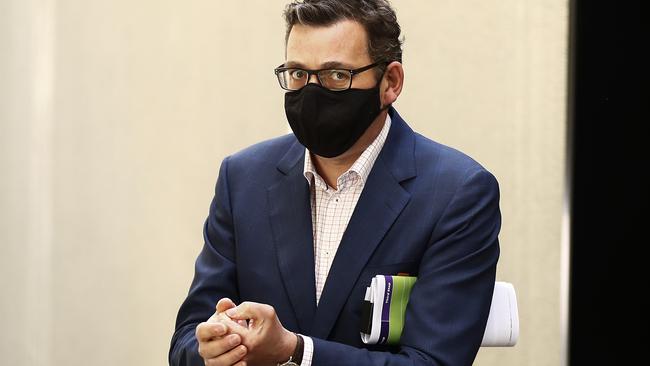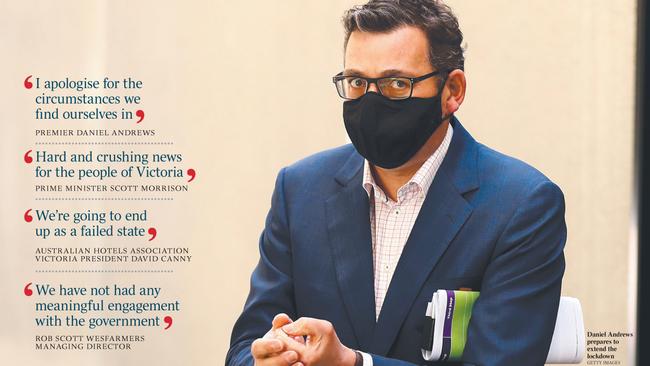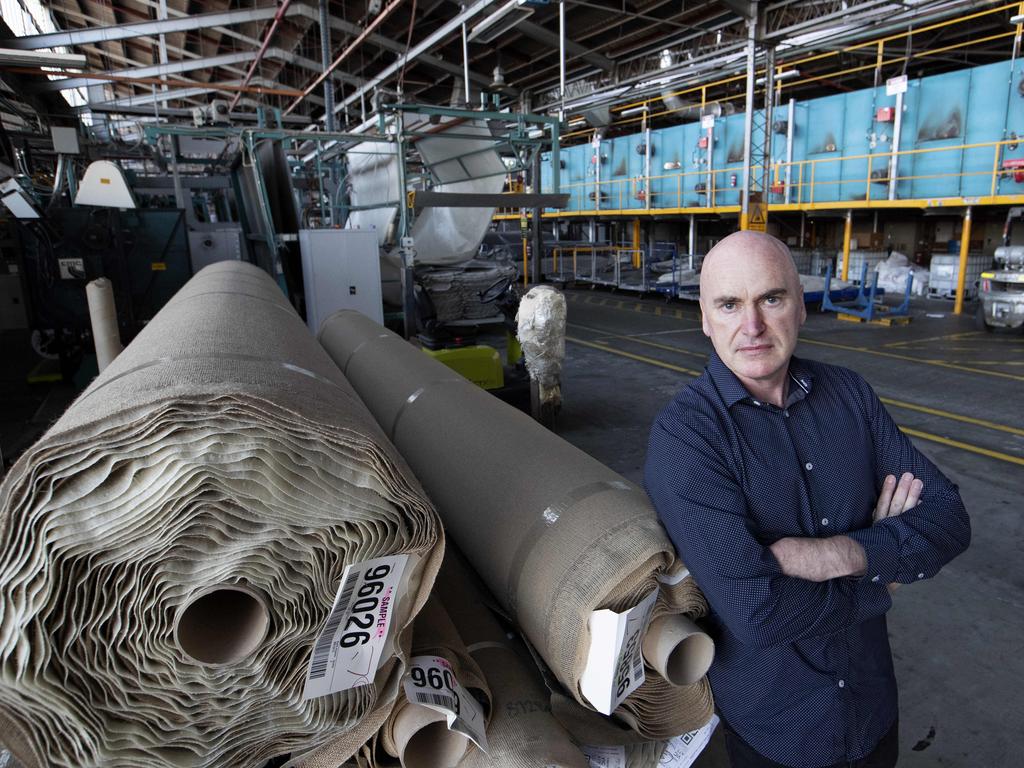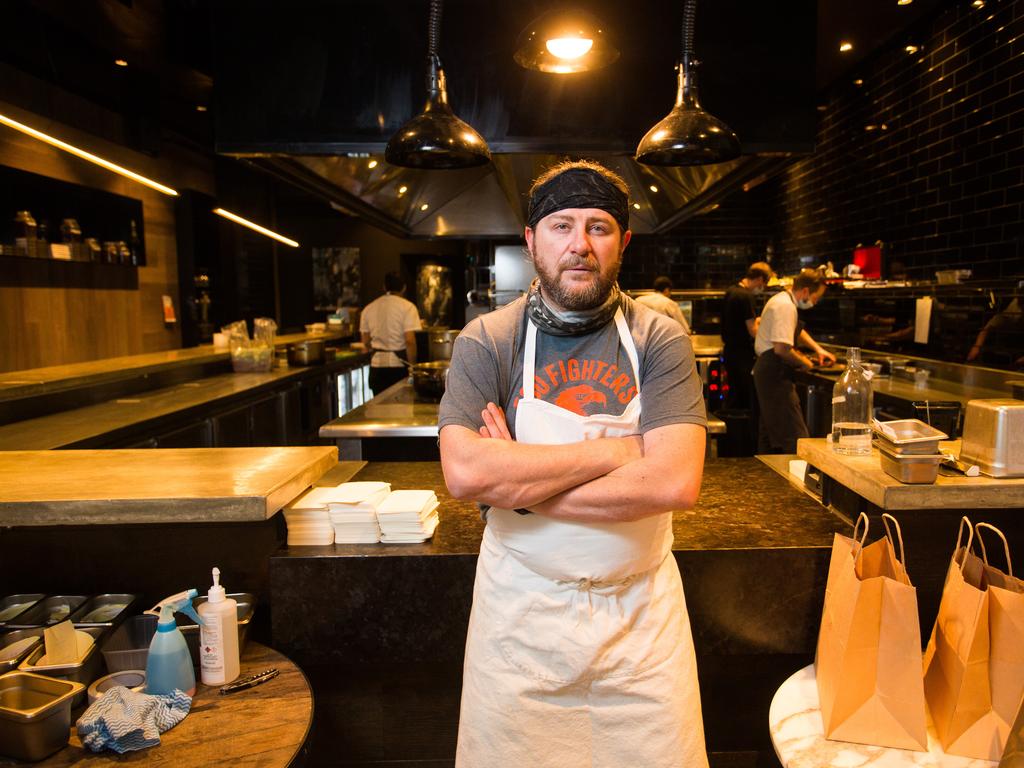Slow, steady strangulation for millions
Daniel Andrews says he had ‘no choice’ but to extend the lockdown — the impact of which will be felt across the country.

Five million Melburnians will be forced to remain under stay-at-home restrictions until at least the end of October under a lengthy roadmap out of lockdown unveiled by Daniel Andrews, which is designed to strangle COVID-19 but will deepen the state’s economic crisis.
The Victorian Premier said he had been left with “no choice” but to extend the lockdown — the impact of which will be felt across the country — with a night curfew to lift only when average daily case numbers fall below five.
“I apologise for the reality we find ourselves in, but we can’t change that,” Mr Andrews said.
“Pretending it’s over because we want it to be, that is not something I will do.”
Under the roadmap, the 8pm curfew will be moved to 9pm on Sunday. Other restrictions will slightly ease on September 28 if the average daily case rate falls below 50 over the previous fortnight, with childcare to reopen, gatherings of five people from two households allowed, and some students returning to school.
These restrictions will stay in place for four weeks — and until there are fewer than five cases detected a day on average for a fortnight — when a prohibition on leaving home and the curfew will be lifted.
Scott Morrison described the roadmap as “crushing news”, warning of “further economic cost”. “While this needs to be weighed up against mitigating the risk of further community outbreak, it is also true that the continued restrictions will have further impact on the Victorian and national economy, in further job losses and loss of livelihoods, as well as impacting on mental health,” the Prime Minister said in statement with Josh Frydenberg and Health Minister Greg Hunt.
“Of course the federal government would like to see restrictions in Victoria lifted as soon as it is safe to do so, but at the end of the day these are decisions solely for the Victorian government to determine.”
In the statement, Mr Morrison, the Treasurer and Mr Hunt made pointed comparison to NSW, which has recorded more than 50 new infections in the past week but remains without a lockdown, noting the “critical importance” that contact tracing is strengthened.
“In NSW, this has enabled the Berejiklian government to respond to multiple outbreaks while permitting businesses and people to carry out their daily lives in a COVIDSafe way,” the statement reads.
“Restrictions are not substitutes for strengthening health systems to cope with the virus, especially when community outbreak is brought under control.”
Business groups also reacted with anger and concern at the roadmap, with the Australian Retailers Association describing it as a “death sentence” for Melbourne retail. Others, like Wesfarmers, said the government had not made it clear what health risks opening its stores would pose.
The state will allow all retailers to open, and restaurants to have up to 50 patrons, after November 23 only if there have been no new cases in the previous fortnight.
Victoria’s plan is based on Melbourne University modelling, which forecast scenarios about the likelihood of a third wave if restrictions were loosened earlier. Deputy Chief Health Officer Allen Cheng said — with between 60 and 100 cases daily — Victoria was “not even close” to being in the same position as NSW in managing the virus.
“If we open up too early, we risk another resurgence and undoing the work we have done,” Professor Cheng said.
“The worst outcome for everyone is the need to have repeated lockdowns with the uncertainty of never knowing from week to week what we’re doing.
“None of us would be able to plan anything.”

Victoria has had 666 deaths attributed to COVID-19, and 19,538 cases — 1872 of those are still active. Victoria’s current 14-day daily average number of cases reached 101 on Sunday with 63 new cases, down from a peak of 505 less than a month ago on August 8.
From Sunday, some restrictions will be slightly eased, with the curfew starting one hour later, at 9pm. Public gatherings will be allowed for two people outdoors for two hours, and those who live alone can nominate one person who can visit their home.
If the state records fewer than five new cases on a daily average across a fortnight, restrictions will ease more considerably on October 26. That would reopen hospitality for outdoor seated service, with non-essential retail also allowed to begin trading.
Shopping, currently restricted to one person per household, will also be allowed from this time, as will weddings and intrastate travel.

If there are no COVID-19 cases for a fortnight, Victoria will move to the last step in the roadmap — allowing 20 visitors into a home and public gatherings of 50.
This step, expected on November 23, will also allow onsite learning for Grade 3 to Grade 10.
“COVID Normal” will only be achieved when there are no new cases for 28 days, and no ¬outbreaks of concern in other states or territories, the document outlines.
Regional Victoria, however, will no longer have a curfew in place from Sunday, with schools to return to onsite learning for all students from the start of Term 4.
However, Mr Andrews said Geelong remained an area of “some concern” and would remain on “close watch”.
“We wouldn’t want a situation where the preconditions for moving to another set of rules for all of regional Victoria were to be held back because of case numbers just in one area, namely the Geelong corridor,” he said.
“We may have to treat Geelong separately. I’m giving people fair warning of that. I’m not actually announcing that.”
Deputy Prime Minister Michael McCormack appeared to criticise Mr Andrews’s roadmap, saying it was not possible to “treat the whole of regional Victoria as a singular entity for COVID-19 recovery”.
“A one-size-fits-all approach might work in suburban Melbourne. It does not work in regional Victoria,” he said.
“Making the removal of restrictions in Mallacoota contingent upon case numbers in Swan Hill, more than 800km away, would be like closing Sydney down until Melbourne’s numbers drop.”
Labor leader Anthony Albanese declined to comment on Sunday, but deputy leader Richard Marles, a Victorian, said while nobody wanted to remain under the restrictions for a day longer than necessary, the state “must be guided by the health advice”.
“The health advice that Premier Andrews outlined shows we can’t run out of the strict restrictions or we’ll be back in a strict lockdown by the end of the year,” he said.







To join the conversation, please log in. Don't have an account? Register
Join the conversation, you are commenting as Logout